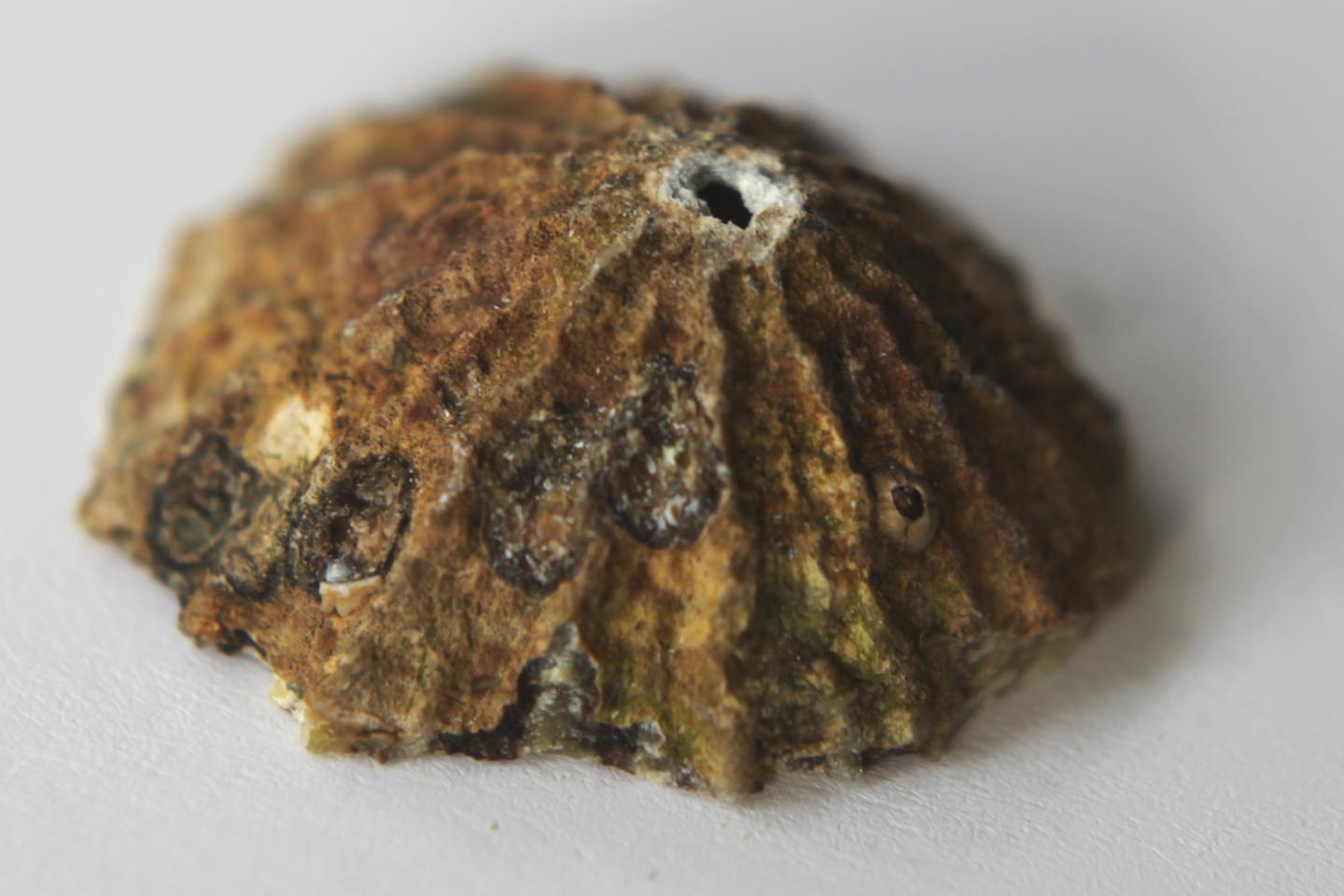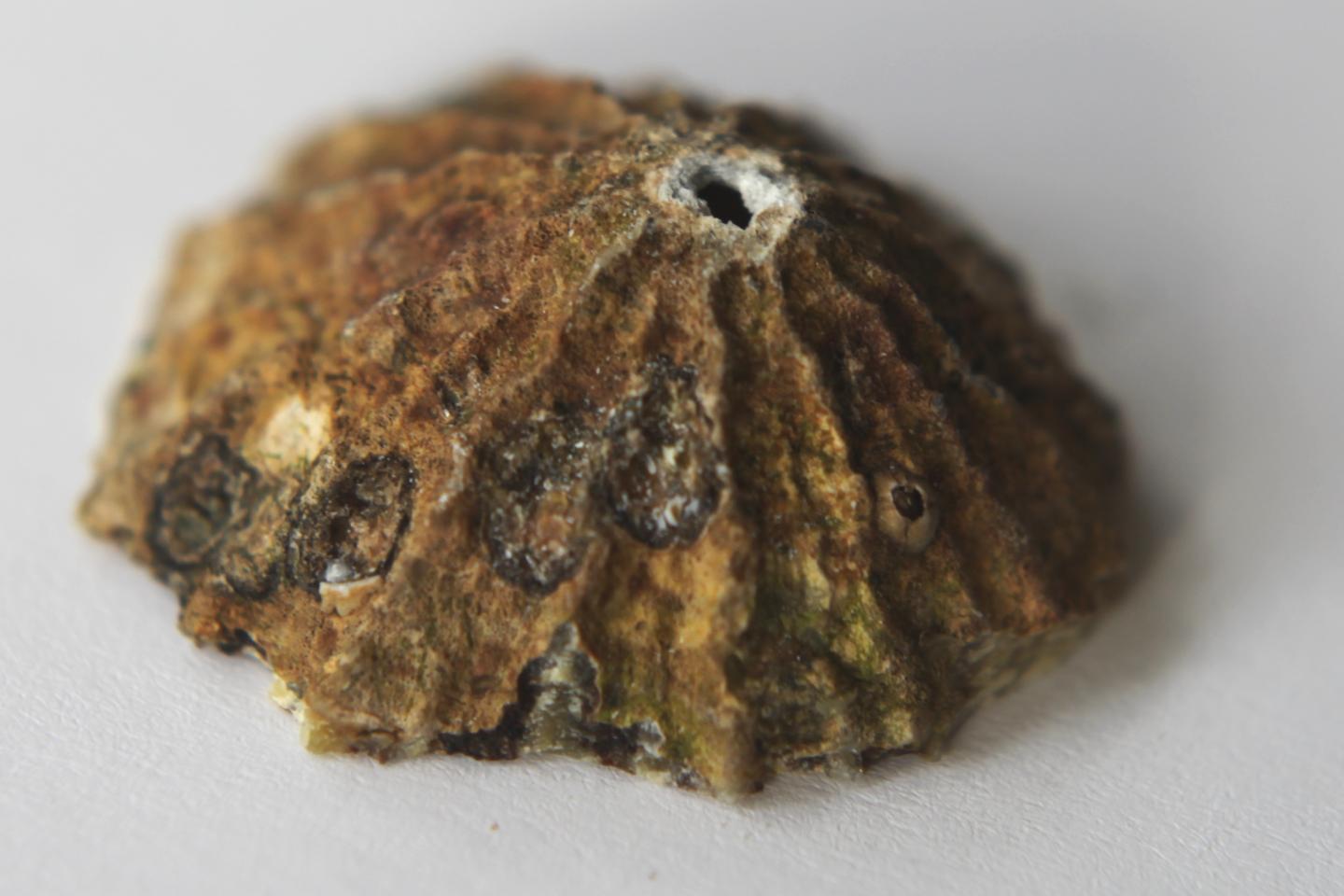
Credit: Professor David Taylor and Maeve O'Neill, Trinity College Dublin
New research from bioengineers paints a surprisingly complex picture of limpets – the little seashore creatures that are ubiquitous on rocky patches of beaches in many parts of the world. The bioengineers have discovered that limpets are able to detect minor damage to their shells with surprising accuracy before remodelling them to make them stronger. In many ways, the way they heal is similar to the way broken bones mend in mammals.
The bioengineers discovered that the apex of a limpet's shell acts like the "crumple zone" of a car, by taking the brunt of any major damage to protect what's inside. What most surprised them, however, was that limpets that experience shell damage seem to know or sense this – and, unlike typical car owners – actively carry out repairs themselves, by depositing new biological material to repair structural weaknesses and restore former mechanical strength.
The research, led by a team from Trinity College Dublin, has just been published by the Journal of the Royal Society Interface.
To assess how limpets reacted to damage, the researchers simulated some of the stresses they experience in the wild from rough seas and moving rocks/debris (by dropping weights); general abrasion and shell weathering (by using a metal file); and from attacks from predators (by using a nail to create a small hole in the apex). The limpets reacted to these stresses by repairing their shells from within, and while after 60 days the shells were never as thick as before, they had regained their former protective strength.
Co-first author, Maeve O'Neill is a PhD Candidate in Trinity's School of Engineering. She said: "Our study shows that limpets are able to repair damage to their shell, both visually and functionally, and that they are also able to restore mechanical strength in as little as a month. The way they do this is essentially similar to how bones heal in mammals, as the process is at least partially carried out by the deposition of new material."
Professor of Materials Engineering at Trinity, David Taylor, added: "We've studied healing before, in human bones and also in the exoskeletons of insects, but we were amazed to discover that these simple marine organisms are capable of reacting in a very subtle and clever way."
###
Media Contact
Thomas Deane
[email protected]
353-189-64685
@tcddublin
http://www.tcd.ie/
Related Journal Article
http://dx.doi.org/10.1098/rsif.2018.0299





